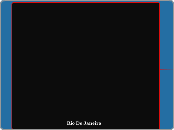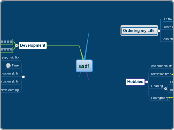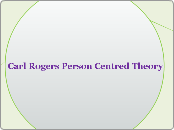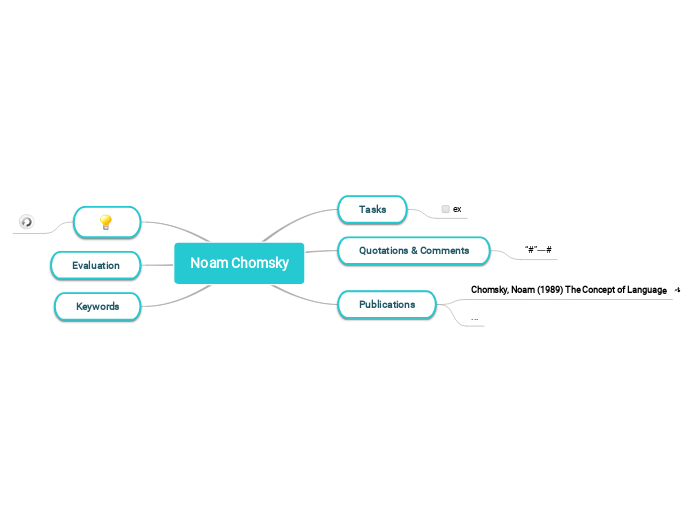INDICATORS OF THE SOLIDARITY ECONOMY
ALTERNATIVE INDICATORS TO PIB
It is an economic indicator that reflects the monetary value of all the final goods and services produced by a country or region in a certain period of time, usually one year. It is used to measure the wealth that a country generates.
Gross Inner Happiness (FIB)
Aware that having many material goods does not imply happiness, in Bhutan they defined this indicator that takes into account health care, the time available for family and friends, the conservation of natural resources and the environment, or the enjoyment of the art. Thus, for example, reducing the working day is undoubtedly a good measure, because not only would unemployment be reduced, but we would also have more free time. The idea is very interesting, as long as it does not serve to stop worrying about poverty and inequality.
Indicators, types of footprints: the ecological footprint and the water footprint
They measure the sustainability of a region, product or activity, with respect to its consumption of natural resources. High values of these indicators indicate a high consumption of resources, that is, a larger footprint indicates less sustainability. The ecological footprint measures the amount of territory that is required to maintain an activity or way of life, and compares it with the actual available territory. All industrialized countries need to maintain their lifestyle more than twice the territory they possess, so they are using resources that, in fairness, correspond to other people.
Defined by the UN, it uses 3 parameters to measure the quality of life of a country:
-Life expectancy,
-Decent standard of living (GDP per capita), and
-Education (years of compulsory education, students enrolled at different levels, and literacy rates).
GREEN PBI
This index was born as a proposal by the United Nations (UN) to find out how respectful a nation is with the use of its natural resources. That is, without there being an overexploitation of its natural resources and without the spread of poverty. And it is that economic growth does not have a direct relationship with green GDP, that is, a nation can grow, but that does not translate into less overexploitation of its natural resources, in fact, in most cases it is just the opposite.
The greater the depletion of natural resources, the less will be the economic success and quality of life in the future of humanity
Integrated economic environmental accounting system (SCAEI)
Environmental And Economic Accounting System
It is that integration in the macroeconomic accounts of the National Accounting System
broadens the concept of capital to encompass not only man-made capital but also non-produced natural capital, such as marine resources or tropical forests, land, soil, subsoil assets (mineral deposits), and resources air and water.
Genuine or actual progress indicator (IPG)
It is an indicator that seeks to measure economic well-being from an accounting perspective.
Social indicators
This section aims to measure people's quality of life. Therefore, it considers positive and quantifies activities that GDP totally ignores: housework, childcare, volunteer work, value of education, and the use of infrastructures).
Environmental indicators
They measure air, water, and noise pollution, as well as the loss of ecosystems (wetlands, farmlands, forests ...). The damages of climate change are also quantified (93 dollars per ton of CO2).
Economic indicators
They include economic measures, such as expenses in general, but also take into account the duration of durable goods (electrical appliances, cars ...). The latter will benefit societies that build more durable goods, avoiding planned obsolescence.
An indicator is processed information that seeks to generate an idea about a phenomenon and its evolution.
That is, it is a set of data that allows to simplify, measure, compare and communicate information, and makes it possible to visualize the behavior of agents or systems
Indicators for another economy
The dispute that the "new" indicators interfere with the "old" is, above all, a reflection of an ethical confrontation in the field of values, it is part of contemporary civilizing changes that seek to subordinate the economy to society.
Accompanying the performance of the solidarity economy means assuming the values of that other economy as a standard of measurement. This, by relocating the human being at the center of development (overcoming the myth that economic growth and technological modernization per se would improve living standards), recognizes the value of use and the value of the bond between people as superior to the exchange value of goods and services, which makes the search for a better life, sustainability, social justice and quality of life become criteria for evaluating economic dynamics.
In the modern economy, progressively the notion of wealth was replaced by those of value and price, which made the creation of wealth disconnected from the maintenance of life, that is, from the creation of real and significant values (Cordeiro, 1995 ).
Thinking about new indicators forces us to deeply review our representation of wealth. This is explicit in the definitions of the World Bank that lead to convert everything into “capital”. Also for UNDP, true wealth must be judged based on people's ability to live the life they appreciate, on the conditions of access to universal rights
The existing practices of solidarity economy are still maturing the criteria capable of defining a global agenda democratically. Currently, there are rare indicators, at the local, national or international level, that manage to account for the impacts of the multiple initiatives of this “other economy”. The existing information systems are inadequate to fully understand and apprehend the solidarity economic logic, which makes it partially invisible
The construction of indicators
Local indicators provide the community with part of the information necessary for action and promote awareness of the problems that it identifies. The goals to be achieved go through a joint definition of a neighborhood or community. The indicators indicate whether there is an approach or distance from these goals, while facilitating communication and more effective coordination to address the causes of the problems identified.
The solidarity economy is linked to the promotion of a new paradigm that "contemplates the democratic evaluation of human activities, in which monetary accounting hardly constitutes a subset" (Viveret, 2001). There is no doubt that the arrogant and paternalistic stance on the part of state institutions to offer ready solutions for a passive society is anachronistic. Contemporary society is increasingly intelligent and capable of conducting it self
The acceptance of the concepts of sustainable development and human development, from the moment that it was rapidly assimilated by international organizations and communities, was a process carried out from the top down, defining an agenda with specific criteria and goals.
On the other hand, the criticism of the ecological economy to the PBI has gained effectiveness and acceptance, more than anything in the international instances. This is the case of “Green PBI” and the other environmental performance indicators of the OCDE and other international organizations.
We know that the PBI does not count any type of unpaid work, which makes all domestic work invisible, and hides the work of women. This situation of loss of prestige of the activities associated with the feminine is also reflected in the monetary devaluation of the jobs related to the area of health, education, care for children and the elderly, etc.
There for, discussing indicators always requires reflection on what, for what, how and for whom we are analyzing the “data”, so that citizens can be informed, trained (and not deformed ...).
Here we find one of the main fields of political dispute: on one side are the increasingly mysterious indicators at the service of financial speculation and big money. On the other, the struggle to put social and ecological rationality at the center of political and economic calculation.
New international indicators
It was only in the 1970s that several new indicators emerged, with proposals for corrections to the GDP, in order to highlight the information that was being missed.
The construction of alternatives was strengthened with the 1987 Brundtlant Report and with the Rio-92 Summit, where the urgency of indicators that would make it possible to operationalize the concept of sustainable development was underlined.
Max-Neef's needs and satisfiers matrix.
An important frame of reference, adapted to the solidarity rationality of an economy on a human scale, was developed in 1986 by Max-Neef (1998) in collaboration with A. Elizalde and M. Hopenhayn.
Considering that development refers to people and not objects, it distinguishes the basic human needs considered finite and invariable, and disaggregated according to four existential categories (being, having, doing, being) and nine axiological categories (subsistence, protection, affection , understanding, participation, leisure, creation, identity, freedom) of the satisfiers of these needs (what societies generate to satisfy the needs, and they are culturally determined).
This system allows us to reconceptualize a series of things, such as the concept of poverty. Poverty does not refer only to subsistence, according to economists, since there is also protection poverty due to the arms race or the increase in violence; poverty of affection, due to machismo and discrimination against women; poor understanding, since we have educational pseudo-systems; poverty of identity due to religious and ideological discrimination
"True Wealth" and "Genuine Savings"
The World Bank (1995) operationalizes the concept of sustainable development through the concept of “true wealth”.
For this organization, “the process of sustainable development refers fundamentally to the creation, maintenance and administration of wealth
OCDE Sustainable Development Indicators.
These indicators were conceived primarily to measure environmental performance, in the national context, through a system of specific indicators for a chosen environmental service (such as biodiversity or climate change).
The most used today is known as PER (Pressure-State-Response), which includes three types of indicators:
A. Pressure indicators, which describe pressures exerted by human activities on the environment.
B. State indicators, which refer to the quality of the environment, as well as the quantity and state of natural resources.
C. Response indicators, which refer to the efforts made by society and by the authorities to reduce or mitigate the deterioration of the environment.
Index of Sustainable Economic Well-being (IBS)
The IBS (ISEW in English) was originally conceived by Daly and Cobb (1989). The sustainability of human well-being, over time, is calculated through a series of corrections to the conventional GDP calculation, and includes:
A. A weighting of GDP according to income distribution, measured through the Gini coefficient (an index of measurement of inequality, in this case applied to national income).
B. The reduction of the “defensive” expenses assumed by the population, as part of the expenses in health, transportation for work, or water and air pollution.
C. The sum of the expenses that represent contributions to welfare, such as the construction of highways and public roads, or services that are not considered by the GDP, such as domestic work.
D. The inclusion of values associated with the degradation of renewable and non-renewable natural capital and damage to environmental services (such as the deterioration of the ozone layer).
Human Development Index (IDH)
Created by A. Sen and M. Haq and adopted since 1990 by the United Nations Development Program. The HDI is an aggregate index, composed of the simple average of three indicators that have already been duly normalized:
A. Longevity (measured in terms of life expectancy at birth);
B. Educational level (based on degree of literacy);
C. Standard of living (measured by GDP per capita).
Furthermore, the HDI has contributed to breaking the illusion that economic growth would be positively correlated with improved living standards. However, the HDI is not free of problems: both in terms of the use of traditional weighting methods to add various elements without considering qualitative dimensions, as well as by not incorporating the environmental dimension, by excess of generalization or by being tied to the concept of development
The conventional economic indicator
The best known economic indicator, which prevailed after the Second Great War, is Gross Domestic Product (GDP). For a long time, the variation in this index (which when positive is known as "economic growth") was the main – and practically the only - compass of political leaders
PBI does not care about the origin of the monetary flows it includes (the costs associated with increased accidents or diseases, the multiplication of pollution and, in general, greater destruction of the environment are positively counted as contributions to "economic growth")
Transforms entrepreneurs into the only valid economic operators, as in this scheme they are the only "wealth generators"
Dismisses all types of behaviour and economic activity in solidarity with production and reproduction, generating a well-being associated with meeting material and intangible needs
Encourages immediatistic behaviour on the part of both policy makers and employers, as it shortens the time horizon of accompaniment by referencing a year
Dismisses "unpaid" prevention or repair behaviours (cleaning of contaminated beaches, for example) of such destructions
Encourages unciviced and/or moral behaviour, as environmental, human and social destructions are counted as contributions to wealth









